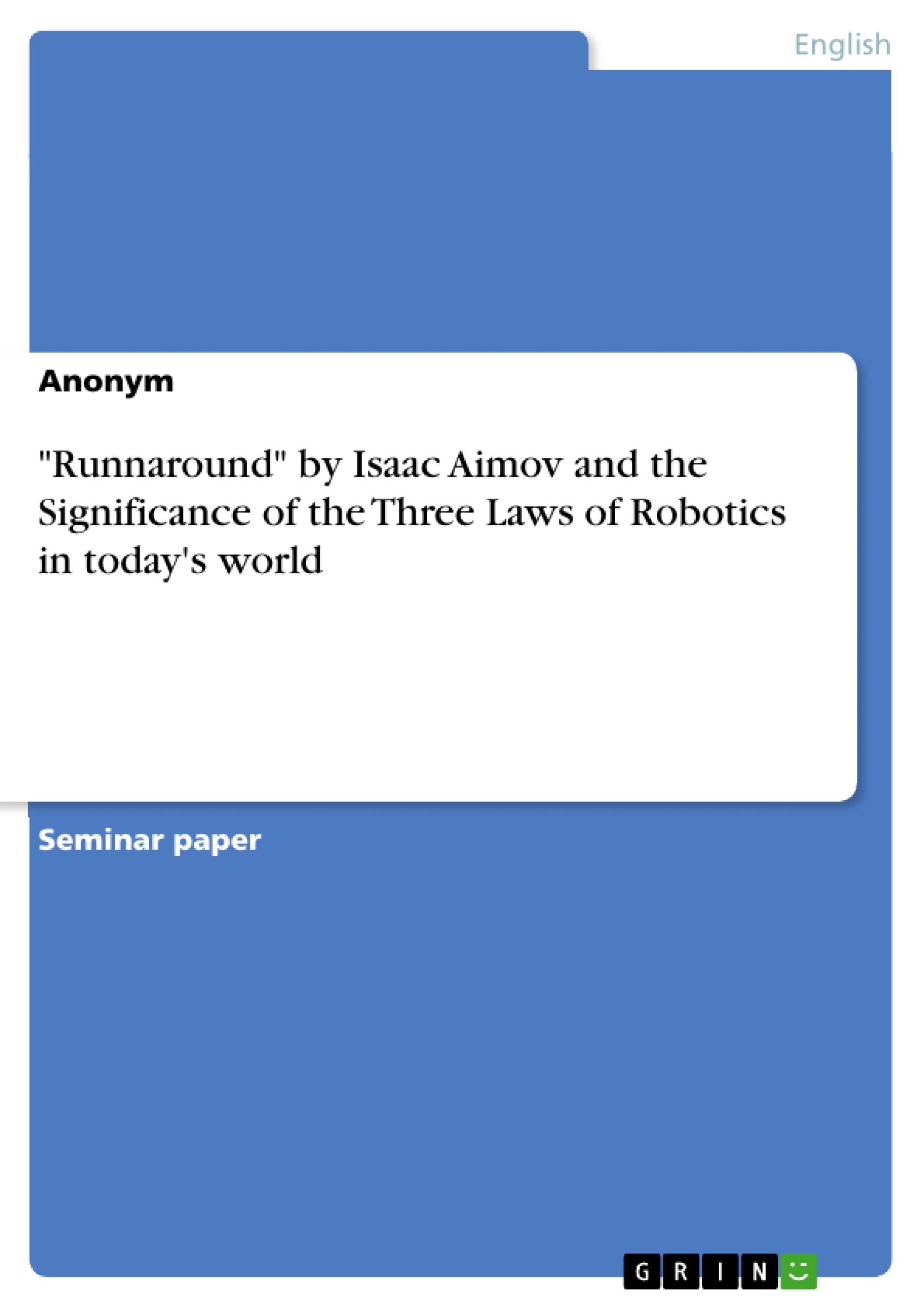The short story Runaround by Isaac Asimov is an example of older literature that encourages thinking ahead by showing challenges of future generations. Especially the handling of robots, subject in many of Asimov’s stories, has gained importance over the years. His fictional ideas even affected the development of future technologies.
In his short stories Asimov stated prognoses and envisioned a world of robotics that have partially come true. He imagined how technologies might work and how people would interact. Asimov’s Three Laws of Robotics are still highly regarded and taken into account when it comes to moral conflicts in the field of robotics. This talent of writing interesting and at the same time conclusive stories made him one of the most popular science fiction authors of the world.
This paper deals with Asimov’s intention and the evaluation of a short story which contains the Three Laws of Robotics, being an example for an important contribution to the science fictional way of thinking. Critic comments on Asimov’s laws, an alternative set of rules and the development of robotics are the basis of the analysis. In this seminar paper, I am going to join the discussion on robotic development, the moral issues and the justification of the Three Laws of Robotics.
Inhaltsverzeichnis (Table of Contents)
- The significance of thinking ahead
- The analysis of the short story "Runaround" by Isaac Asimov
- The main analysis and interpretation of the short story Runaround
- The Three Laws of Robotics
- Buridan's Ass - the dilemma of the runaround
- The significance of the Three Laws of Robotics in "Real Life"
- Ideas of Artificial Intelligence
- The problem of unquestioning obedience
- Programming morality
- The Three Laws of Responsible Robotics
- The ethical robot project
- Can ethical robots replace human beings in the future?
- The conclusion of my research
Zielsetzung und Themenschwerpunkte (Objectives and Key Themes)
This paper aims to analyze Isaac Asimov's short story "Runaround" and its relevance to the development of robotics and the ethical considerations surrounding artificial intelligence. The paper examines the Three Laws of Robotics, their application in the story, and their significance in real-world scenarios. It explores the potential benefits and dangers of advanced robotics, including the challenges of programming morality and the potential for robots to surpass human capabilities.
- The importance of thinking ahead in a rapidly changing technological landscape
- The analysis of Isaac Asimov's "Runaround" and its contribution to science fiction literature
- The implications of the Three Laws of Robotics for the development and use of AI
- The ethical challenges and opportunities presented by advanced robotics
- The potential for robots to play a significant role in future societies
Zusammenfassung der Kapitel (Chapter Summaries)
- The introductory chapter discusses the importance of thinking ahead and how science fiction literature can be a valuable tool for envisioning the future and its ethical implications. The chapter highlights Isaac Asimov's work as a prominent example of this genre and introduces the central theme of the paper: the analysis of "Runaround" and its relevance to robotics and ethical AI.
- The second chapter focuses on a comprehensive analysis of "Runaround," examining its plot, structure, setting, writing style, point of view, and characters. It explores the story's central conflict, the runaround dilemma experienced by a robot named Speedy, and how this conflict is resolved through the application of the Three Laws of Robotics.
- The third chapter delves into the real-world implications of the Three Laws of Robotics. It examines the concept of artificial intelligence, the challenges of unquestioning obedience in robotics, and the potential for programming morality into AI systems. The chapter also discusses the ethical implications of using robots in various fields, including the development of the ethical robot project and the question of whether ethical robots can replace human beings in the future.
Schlüsselwörter (Keywords)
The main keywords and focus topics of this paper include science fiction, Isaac Asimov, "Runaround," robotics, artificial intelligence, the Three Laws of Robotics, ethical AI, moral conflicts, programming morality, robot ethics, and the future of robotics.
- Quote paper
- Anonym (Author), 2016, "Runnaround" by Isaac Aimov and the Significance of the Three Laws of Robotics in today's world, Munich, GRIN Verlag, https://www.grin.com/document/513189




